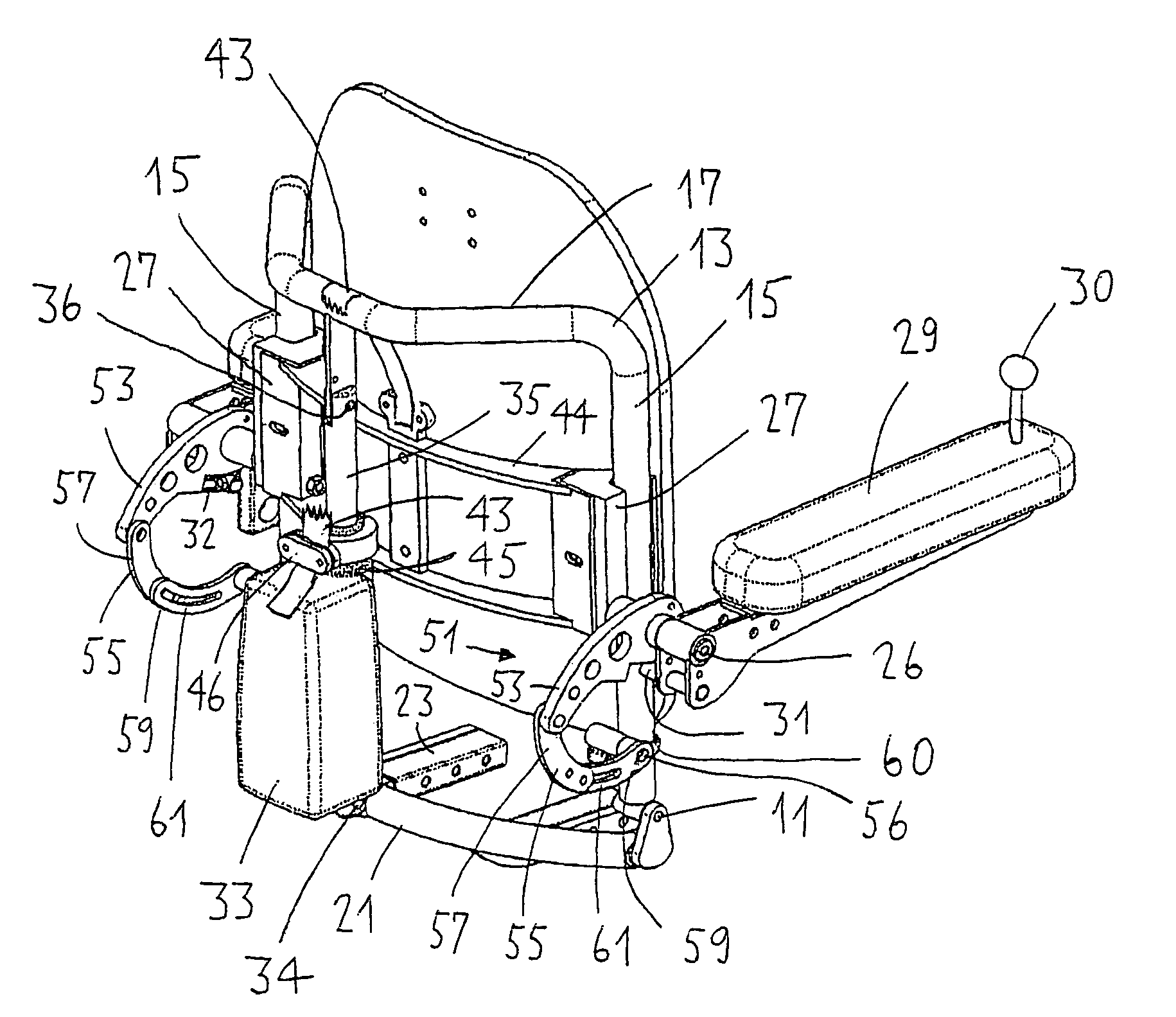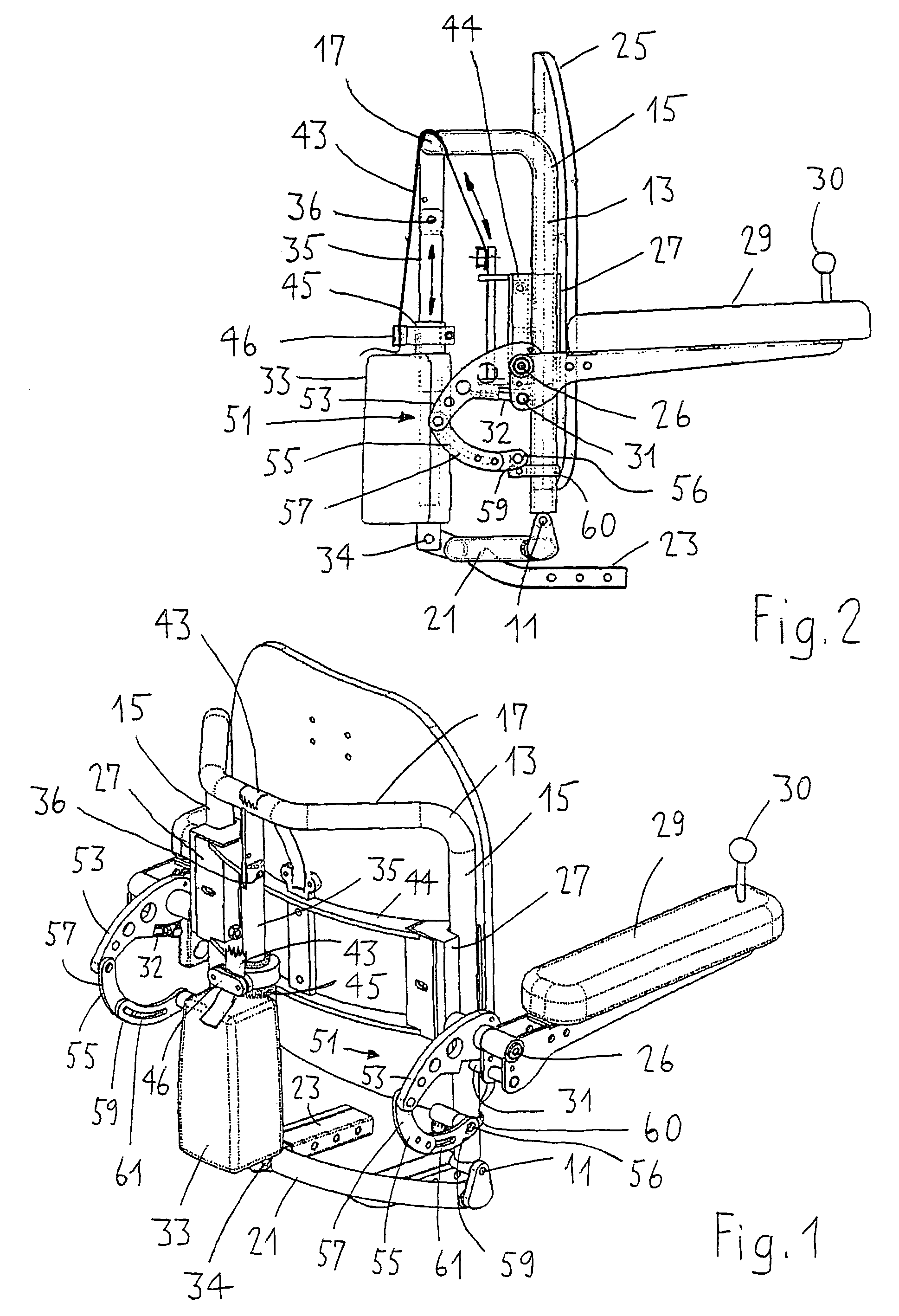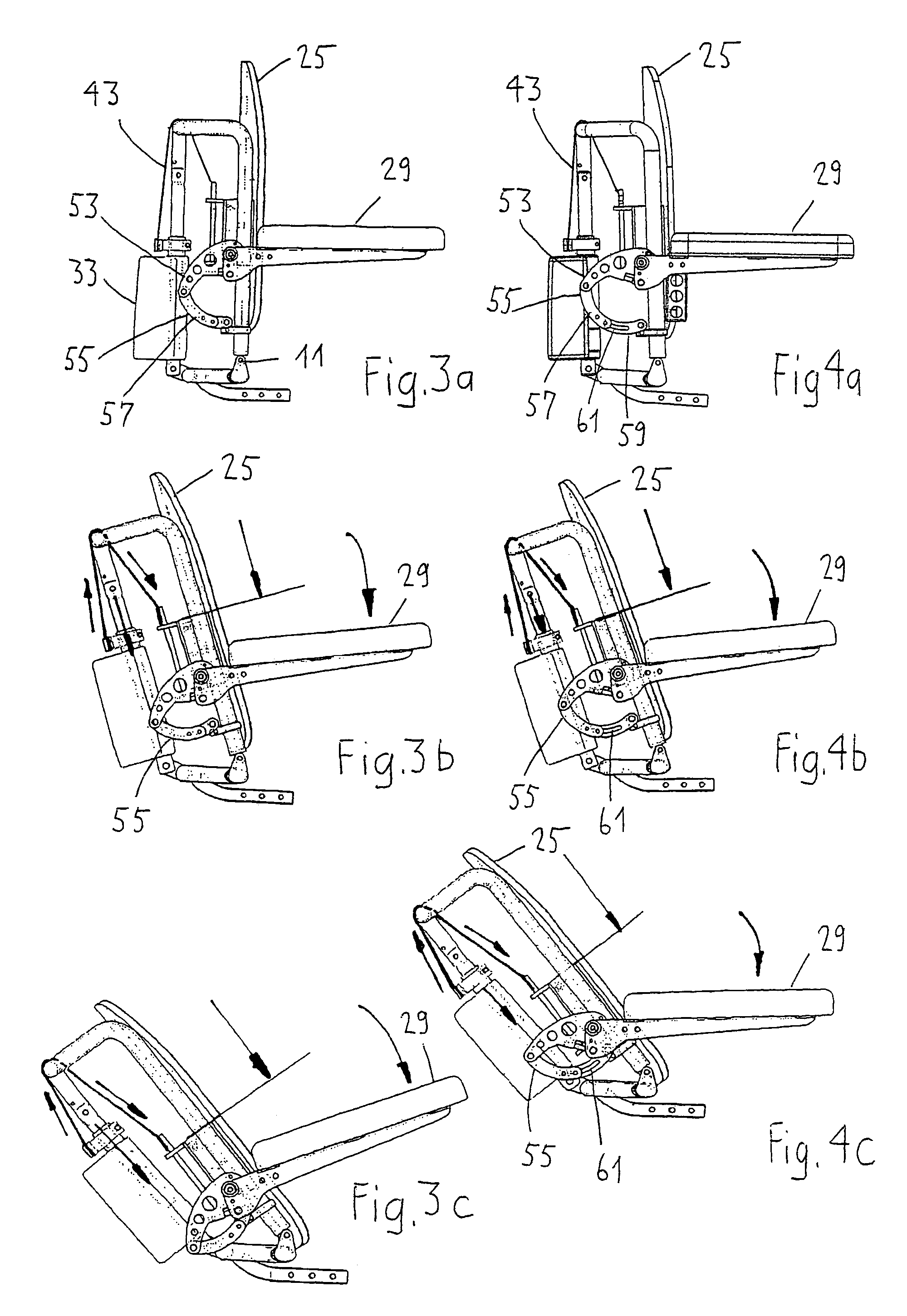Seat back unit for a chair, in particular for a wheelchair or a stand-up wheelchair
a seat back and chair technology, applied in the field of seat back units for chairs, can solve the problem that the arms of users may glide from the armrests, and achieve the effect of easy operation of the controls and increased or decreased inclination of the seat back
- Summary
- Abstract
- Description
- Claims
- Application Information
AI Technical Summary
Benefits of technology
Problems solved by technology
Method used
Image
Examples
Embodiment Construction
[0015]The seat back unit shown in FIGS. 1 and 2 comprises a seat back frame 13 capable of being tilted around the tilting axis 11. The seat back frame 13 has two columns 15 arranged parallel to each other and being connected by a connecting section 17. Preferably, the seat back frame 13 is made of a single piece of tubing. The columns 15 of the seat back frame 13 are with their lower end connected to the support 21 which has a connector arm 23 for mounting the seat back unit to a chair. However, it would also be possible to connect the seat back frame 13 directly to the chair. The seat back 25 has on each side a guiding portion 27 partly enclosing the pertaining column 15. Accordingly, the seat back 25 is glidingly movable in the seat back frame.
[0016]The arm rests 29 are pivotally connected to the seat back frame 25 at 26. They are kept in the position shown in FIGS. 1 and 2 by an abutment 31. An adjusting screw 32 permits a slight adjustment of the angular position of the arm rest...
PUM
 Login to View More
Login to View More Abstract
Description
Claims
Application Information
 Login to View More
Login to View More - R&D
- Intellectual Property
- Life Sciences
- Materials
- Tech Scout
- Unparalleled Data Quality
- Higher Quality Content
- 60% Fewer Hallucinations
Browse by: Latest US Patents, China's latest patents, Technical Efficacy Thesaurus, Application Domain, Technology Topic, Popular Technical Reports.
© 2025 PatSnap. All rights reserved.Legal|Privacy policy|Modern Slavery Act Transparency Statement|Sitemap|About US| Contact US: help@patsnap.com



